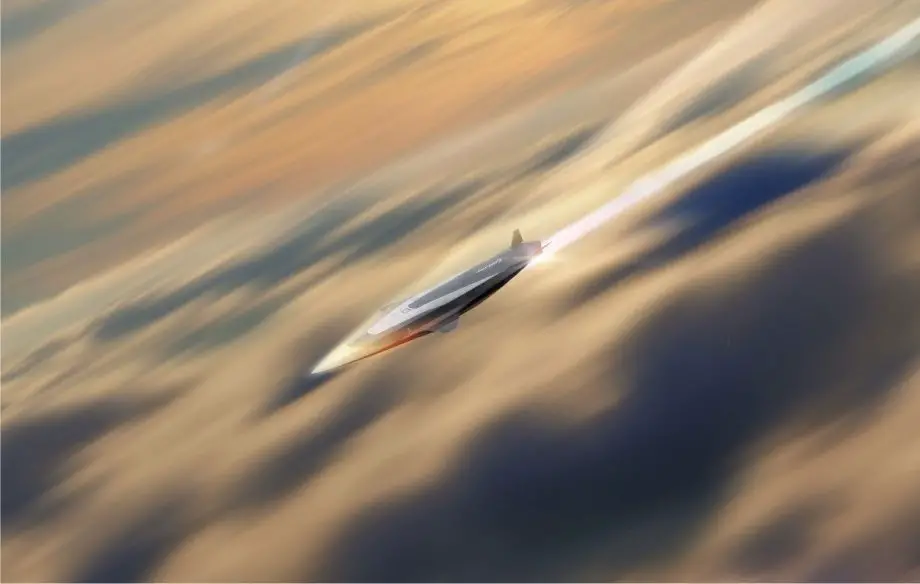According to a PR published by Raytheon on January 9, 2023, has announced the successful completion of the initial technical review and prototype fit-check for the Hypersonic Air Launched Offensive Anti-Surface (HALO) missile.
Follow Navy Recognition on Google News at this link
 Artist rendering of an hypersonic missile. (Picture source: Lockheed Martin)
Artist rendering of an hypersonic missile. (Picture source: Lockheed Martin)
The HALO program, a key initiative for the U.S. Navy, focuses on developing a carrier-based missile system. This system is poised to revolutionize naval warfare by allowing the Navy to assert control in contested battlespaces, particularly in anti-access/area denial (A2/AD) environments. It aligns with the Navy's strategic approach to long-range fires, addressing the need for advanced weaponry in increasingly complex global threats.
A notable milestone was the successful fit check of the HALO prototype on an F/A-18 aircraft in the fall, confirming compatibility with the Navy's Super Hornet and existing support equipment.
HALO missile
It aims to advance upon the capabilities of its predecessor, the AGM-158C Long Range Anti-Ship Missile (LRASM), by offering improvements in speed and range. Initially projected to achieve hypersonic speeds, recent updates indicate that HALO may attain only supersonic speeds.
Despite this, its advanced propulsion system is expected to provide significant advancements over current missile systems in terms of engagement distance and precision.
Hypersonic air launched missile
One of the defining features of hypersonic missiles is their dynamic flight profile. Unlike traditional ballistic missiles that follow a predictable trajectory, hypersonic missiles can maneuver in unpredictable patterns, making them much more difficult to track and intercept. This ability not only enhances their effectiveness but also significantly complicates defense strategies against them.
The propulsion of these missiles is a critical aspect of their design. Scramjet engines are commonly used, utilizing atmospheric air that is compressed and mixed with fuel at supersonic speeds.
This system allows for efficient maintenance of hypersonic speeds without the complexities of a traditional compressor. Alternatively, some hypersonic missiles employ a boost-glide system, where an initial rocket boost propels the missile to high speeds, after which it glides towards the target, maintaining velocity through a combination of high-speed rocket propulsion and aerodynamic gliding.
The design and materials used in hypersonic missiles are as important as their propulsion systems. Aerodynamic design is essential for maintaining stability and control at high speeds, typically involving sleek shapes to minimize drag.
These missiles also face extreme temperatures due to air friction at hypersonic speeds, necessitating the use of advanced materials capable of withstanding intense heat without degrading.



